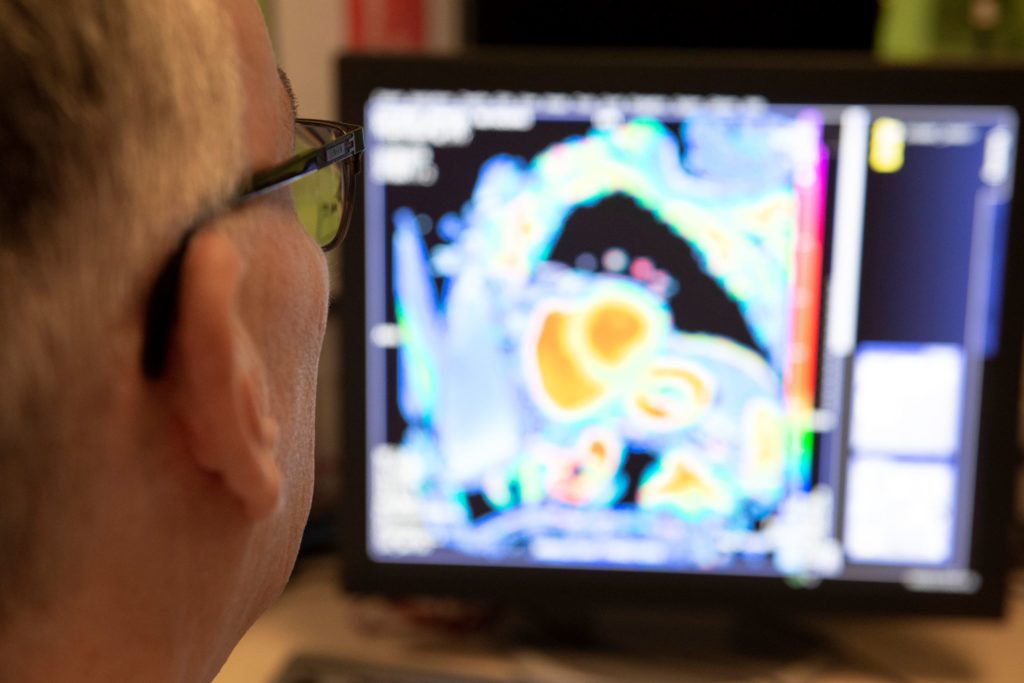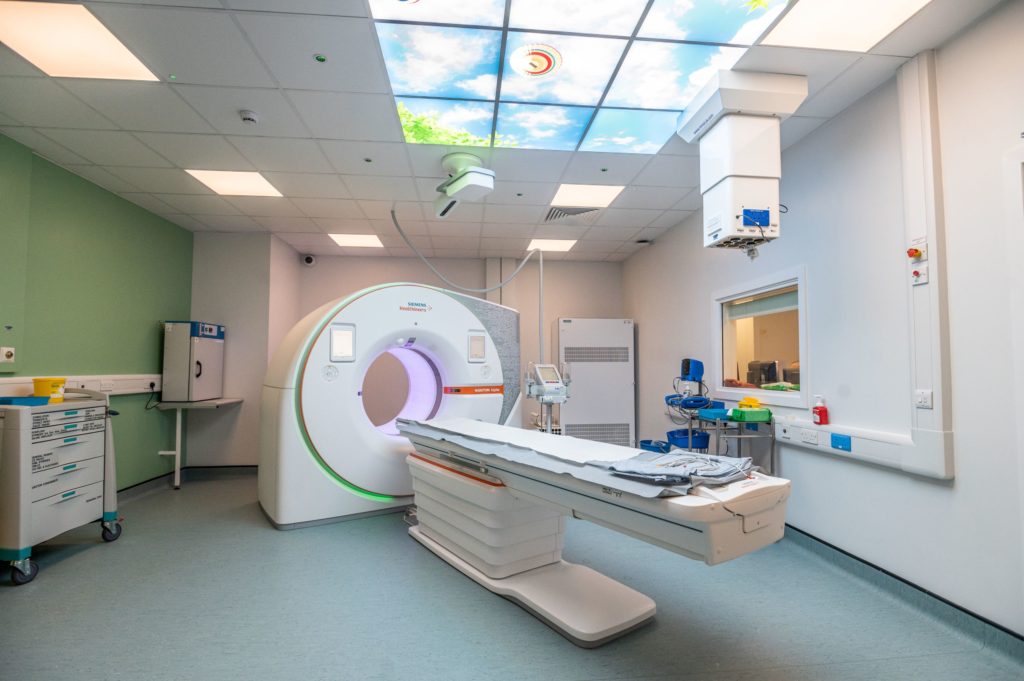Our theme is working – often with other Oxford BRC themes – to improve imaging across many diseases, benefitting patients and the NHS by delivering quicker and more accurate diagnoses; reducing patient risk, discomfort and waiting times; better monitoring of how a disease is progressing or a patient is responding to treatment; and improving efficiency and saving money.

The Oxford ecosystem – the University, the Trust, spin-out companies and industry partners – is an important hub for medical imaging studies; it has an internationally leading reputation in acquiring and analysing medical images, the use of artificial intelligence (AI) and employing the latest imaging technology in the clinical setting. Our researchers have directly influenced clinical guidelines and change clinical practice.
Among the ground-breaking developments we have led are: hyperpolarised MRI, new CT markers of vascular disease, and AI analysis for oesophageal endoscopy, lung CT and multi-modal ultrasound. We have led multi-centre clinical imaging trials, including recent national studies that are helping to guide COVID-19 treatment.
Our theme is very active commercially, having collaborated with more than 60 companies and secured 13 patents. Over the past 10 years, our researchers have produced seven new spin-out companies:
- Caristo Diagnostics (CT-based assessment of coronary artery disease risk)
- Oxford Brain Diagnostics (dementia imaging)
- Ultromics (AI-based echocardiography)
- RAIQC (multimodal image education/AI platform)
- Perspectum (Advanced imaging solutions for precision health)
- Intelligent Ultrasound (training simulators and AI imaging software )
- Optellum (AI-based early lung cancer software)
Many of the world-class imaging research facilities our researchers use have recently expanded or are about to. These include:

- Oxford Centre for Clinical Magnetic Resonance Research (1.5 and 2x3Tesla MRI scanner; 13Carbon hyperpolariser)
- Wellcome Centre for Integrative Neuroimaging (240 researchers; 7T and 3T MRI and magnetoencephalography)
- Acute Multidisciplinary Imaging and Interventional Centre (AMIIC) (new photon-counting CT with unprecedented resolution and tissue characterisation, research cath lab – pictured left)
- Cancer Imaging Centre (hyperpolarised Xenon, MRI, CT, PET-CT);
- National Consortium for Intelligent Medical Imaging
- Institute of Biomedical Engineering Image Analysis groups
- Department of Computer Science.
Sub-themes:
Sub-theme 2: Making imaging more efficient/cost-effective
Sub-theme 3: Translation of imaging discoveries into clinical practice
Sub-theme 4: Use of artificial intelligence (AI)/machine learning in Imaging
Sub-theme 5: Imaging in multi-system disease and multi-morbidity
We are working with a number of other BRC themes, notably Cancer, Translational Data Science, Cardiovascular Medicine and Digital Health, strengthening their research with our cutting-edge imaging tools.
We want to establish our novel imaging technologies across multiple imaging consortia nationally, with a view to them being adopted across the NHS. We are developing various collaborations, such as the National BRC Imaging Network, which is chaired by Professor Stefan Neubauer, and are seeking to ensure these technologies are available in regions where disease is most prevalent and patients at highest risk and need, so addressing inequalities.
Our theme is committed to training the next generation of imaging scientists and users, equipping early-career researchers with tools, mentoring and training they need, establishing a new radiographer training programme, and providing NHS imaging consultants with dedicated funding to develop research programmes.
Patient and Public Involvement and Engagement (PPIE) is embedded in all stages of our research, and we work hard to identify under-represented groups and communities that would benefit from our research, so that we can respond more effectively.